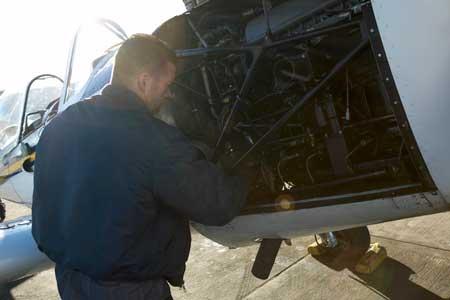| WHEN I say ‘good maintenance is all about TLC’ I’m not talking about the kind of TLC that your ‘significant other’ insists on from time to time. It’s much easier to define what is needed to satisfy the TLC requirements of plant and equipment. It comes down to Tightness, Lubrication and Cleaning – if we could get those three basic components of maintenance right we could easily halve equipment failures. In one study it was found that 55 percent of all failures can be directly or indirectly attributed to incorrect tightness of fasteners. Imagine halving your equipment failure rate – it could be as simple as ensuring fasteners are correctly tightened and secured. I spent the first 16 years of my maintenance career in the aviation industry, which is arguably the most rigorous of industries when it comes to applying standards, and one in which correct security of fasteners is paramount. Even so, I can still relate failures that were caused by the incorrect tightness of fasteners. Thankfully there weren’t many, but there were still somewhat frightening instances. Like when a pilot took a jet fighter for a flight test after a major service and as he pulled back the control stick on take-off the artificial horizon indicator gauge fell out onto his lap! In fairness, the guy popped it back in the hole and carried on, but it fell out because somebody (not me I hasten to add) hadn’t secured it. Tightness of fasteners is a crucial and fundamental part of maintenance. How easy is it for maintenance technicians on your site to get hold of an accurate torque wrench? When was the last time your torque wrenches were calibrated? We must ensure we are using the correct fastener; that it is correctly tightened and just as importantly that it is correctly secured. A bolt needs to be correctly tensioned to do the job for which it was designed. If it is over-tight it will become stretched and weakened. If it is under-tight it won’t do its job and could be put under shear forces it wasn’t designed to endure. If ‘T’ is for tightness then ‘L’ is for lubrication. This is a huge subject but let’s just look at how we store and care for lubricants. Every day, maintenance personnel unknowingly use lubricants that are mixed, chemically depleted, contain particulate, or are contaminated with chemicals or moisture. Lubricants should be considered working components in mechanical systems and great care should be taken in their shelf life, their storage and keeping them free from contamination. The three big enemies of lubricants are varying temperatures, temperature extremes and humidity. All of these can lead to condensation within containers, chemical degradation and moisture ingress. When it comes to lubrication, before we start looking into better and more high tech lubricants to solve our issues, we should look a little closer to home. Where are we storing our lubricants and under what sort of conditions? Do we have a procedure to regularly check for the shelf life of our lubricants? ‘C’ is for Cleaning. As engineers we love to play with gizmos like vibration analysers and thermographic cameras – but give us a rag and ask us to clean a motor and we will probably find any reason not to do it. A motor running as much as ten degrees over its intended operating temperature will last about half its intended life. Why is it running hot? Probably because it’s covered with sawdust/chemical residue/ milk powder, etc. Not only will cleaning ensure equipment runs at its intended temperature but it will also give us a proper opportunity to examine it. As one student on a recent maintenance course put it “Cleaning with meaning”. |
Don’t just clean equipment, take the chance to give it a really good examination. Many of the inspections carried out on aircraft engines are a simple clean and examine routine. We were always taught to use a torch to focus on the area in which you are looking, as this is a great way to ensure your attention doesn’t wander. Cleaning and examining must be more than a cursory wipe-over with a rag and then back to the smoko room for a cup of tea. Cleaning equipment is one of the worst jobs we have to do but is one of the most vital, as it gives us the opportunity to spot leaks and check for loose fasteners and early signs of failure such as cracking or fretting. |






